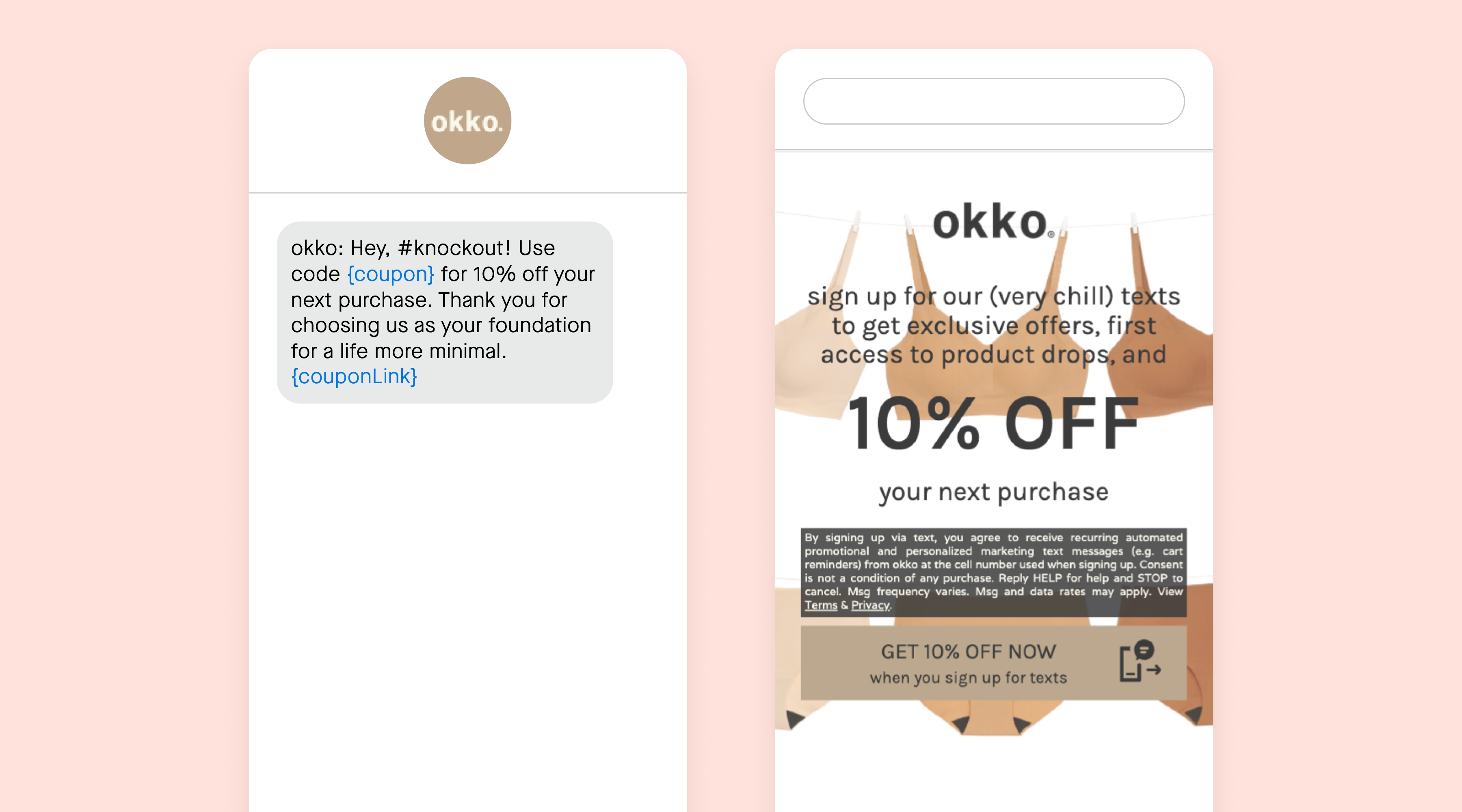
New releases
A smarter, simpler Attentive
Explore new features →
Explore new features →

If the last 18+ months haven’t been hard enough for brands trying to constantly rewrite their playbooks for engaging consumers… holiday 2021 presents an entirely different challenge. Just when you’ve finally figured out how to reach, engage, and convert your subscribers across your digital channels, you’re now also having to deal with supply chain delays, rising production costs, and inventory shortages. All while your customers are ready to spend.
Consumers are ready to engage with you online and in-stores. They’re more inspired and attuned to their personal values than ever before. And they have high expectations when it comes to customer service, hybrid experiences, and corporate social responsibility. They want convenience above all else. But they also want to know that the organic cotton shirt they’re buying is providing a living wage for the people responsible for its production.
The savviest brands have realized that riding the tides of technology changes and unforeseen circumstances means focusing on foundational marketing skills: communication and empathy. As Seth Godin says, “Marketing is no longer about the stuff that you make, but about the stories you tell.”
“Blame it on the supply chain” might just be on the tip of everyone’s tongue. From port and carrier bottlenecks to hiring shortages across the entire supply chain, we know that delayed holiday shipments are going to cause frustration. Not to mention, lead to cancelled orders and lost revenue opportunities.
It’s never too early to start setting expectations with your customers, letting them know that shipping delays are expected industry-wide. Releasing holiday gift guides, offering alternative gifting options (including Earth-friendly gift cards), and updating your FAQs can nudge consumers to place their orders earlier than usual.
Some brands are taking even more creative approaches to encourage their customers to shop early: Love Beauty and Planet is asking consumers to take a pledge to place their orders by December 4th, not just to reduce the chances that their orders might arrive late–but to help the planet. Together with Dr. Josué C. Velázquez Martínez, director of the sustainable logistics initiative at MIT, they found that “on average, rush shipping produces approximately 40% more carbon emissions than ground shipping.”
With consumers getting harder to reach on third-party channels, SMS offers a great avenue for communicating both potentially expected delays, as well as giving people the peace of mind via shipment notifications and tracking.
Already this year, consumers have seen two billion out of stock messages (according to Adobe). But inventory shortages can become opportunities to turn customers—and even those who may not have yet made a purchase from your brand—into engaged members of your loyalty and/or text channel program. Now that’s what I call turning lemons into lemonade.
Take for example this strategy from REI: They knew that bikes and accessories have been out of stock since the beginning of the pandemic, and cyclists were eager to get their hands on new gear. The brand used this shortage as a loyalty play for their co-op members (who get 10% back on all purchases), giving them exclusive access to their Co-Op cycles for a limited time (October 1- 31). Other brands, like Best Buy, are flipping this strategy to drive opt-ins for their loyalty program.
Meanwhile, some brands are using shortages to communicate their brand values. The Ordinary launched a month-long "Slowvember" sale, offering shoppers 23% off during the month of November. On a practical level, skipping a flash sale helped The Ordinary keep an eye on inventory and avoid disappointing shoppers with "out of stock" notices. It also gave them a chance to communicate their commitment to sustainability. The brand pointed out that Black Friday sales often lead to impulse behaviors—a pattern that's not people- or planet-friendly.
When it comes to building empathy, humanizing your brand is key. And when a message is written in the voice of a founder (or someone who represents your brand), it can be even more powerful.
Take for example, Big Barker—a brand that sells orthopedic dog beds. When their company was faced with increased costs of foam, they gave their founder, Eric Shannon, the podium to communicate the reasoning behind their price hike.
In a note to subscribers, he wrote, “We either need to raise prices, or reduce the quality of the materials. And you know we can't cut corners and compromise on quality. That would simply be unthinkable." He offered customers a $25 gift card to place orders before prices went up and followed up a few days later with an FAQ mail about the price increases, answering questions that customers had written in about.
Meanwhile, Phoebe Kunitomi, founder of DTC bodywear company okko, wrote to subscribers, “back in june, I communicated to expect these colors in august. we did not make that deadline, but not for lack of trying. here’s what’s going on: delays at nearly every point of our supply chain have not abated [...] these examples illustrate what we have been facing for well over a year (during which time I have become an expert at coping with anxiety).”

She ended the email letting email subscribers know that SMS list subscribers will get access to their restock first, signing off with “chat tomorrow.” From her casual writing style (the email was written in all lowercase) to her real talk about the stresses she had experienced as a founder, her note left recipients like me feeling warmly toward the brand.
There’s been a real push for transparency from more socially- and eco-conscious consumers. In addition to making people feel good about the brands they support, this level of transparency gives you an opportunity to educate consumers about the costs to produce and ship your products. When your costs go up, or when you choose to increase wages or opt for more expensive materials, you can let your audience in on the why—making them feel more educated and empowered to make buying decisions.
Everlane famously pioneered the movement of “Radical Transparency” and the concept has become so familiar to consumers that it’s easier than ever to bring them behind the scenes. This content can take on a variety of forms including usage/styling tips, factory visits, and fun social videos.
Remember that this new age of marketing is no longer just about selling your products–it’s about telling people a consistent story behind your products. These stories contribute to consumers coming back to restock, being first in line for your next product launch, and also sticking by you when you have to raise prices, make changes to a formula, or simply disappoint them.
Last, but certainly not least, if there’s anything marketers learned over the last year and a half, it’s that we need to meet consumers where they are—and sometimes in multiple places at the same time. We need to be chameleons—seamlessly transitioning between our digital and physical worlds.
As Ulta Beauty’s VP of marketing Karla Davis told Retail Brew, it’s “not just having all the channels for channels sake, but really making sure that there’s a seamless experience across all of them in a way that really kind of works behind the scenes to give the guests what they need, when they need it, and where they need it.”
That means offering BOPIS (buy online, pick up in-store) options, offering digital concierge services via text, email, and social, or incorporating QR codes and mobile touchpoints in store. We often see pop culture showing us futuristic worlds where convenience reigns supreme. In 2021, “the future” started to feel more and more like “now”—and the businesses that find themselves thriving going into 2022 are the ones who focus on the consumer experience, regardless of where it happens.